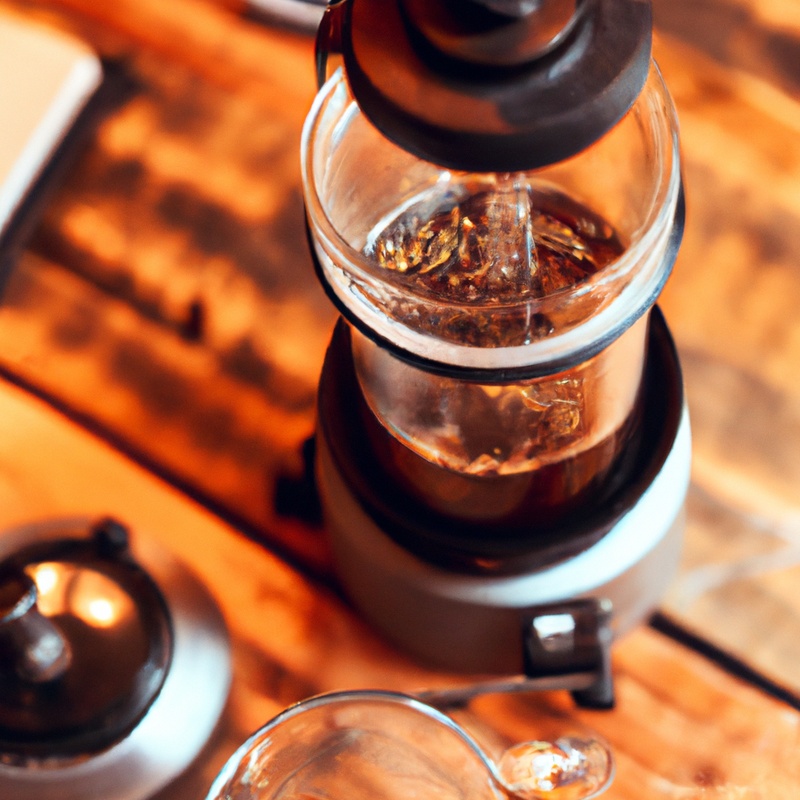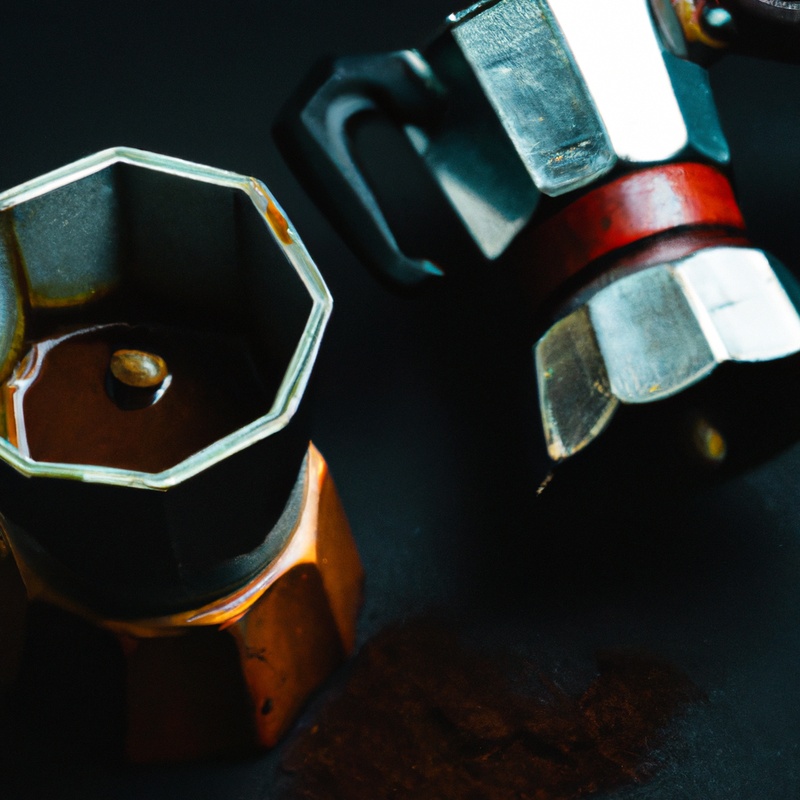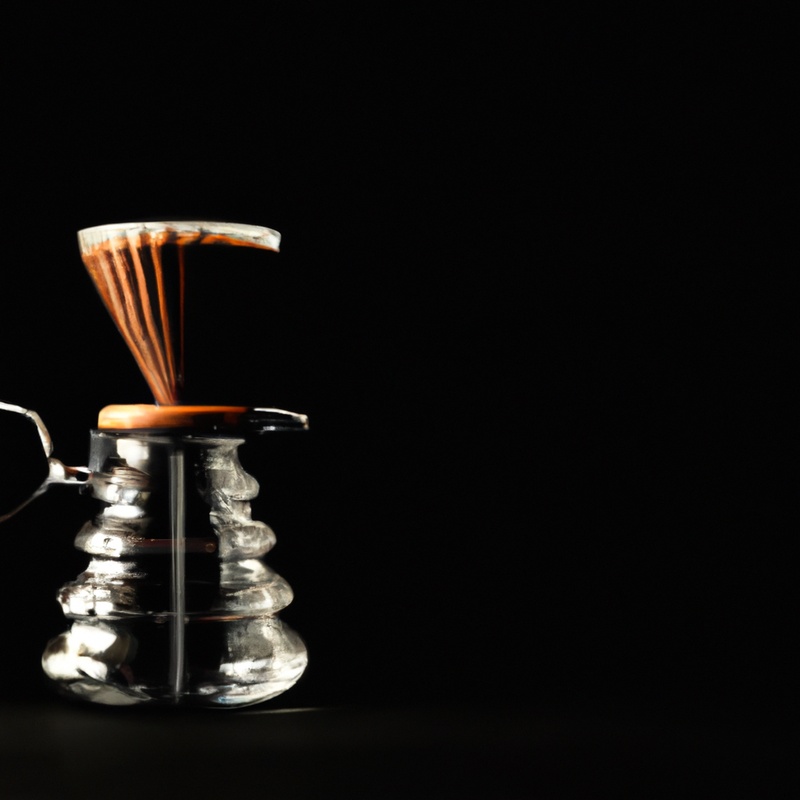Key Takeaways:
- Using a French press with a nylon filter can result in a cleaner and less oily coffee compared to traditional metal filters.
- Preheating the French press and letting the coffee steep for 4 minutes can help achieve optimal flavor extraction.
- Pouring the brewed coffee into separate containers immediately after pressing can prevent over-extraction and bitterness.
- Cleaning the nylon filter thoroughly after each use is essential for maintaining the quality and taste of your coffee.
Looking to level up your coffee game? If you’re tired of those pesky coffee grounds sneaking into your morning brew, it’s time to try brewing with a French press and a trusty nylon filter.
In this article, I’ll walk you through the steps to create the perfect cup of java using this dynamic duo.
From gathering the necessary equipment to pressing the plunger and serving up a rich, aromatic cup, I’ve got you covered. Plus, I’ll share some tips for achieving coffee perfection and answers to common FAQs. Ready to elevate your coffee experience?
Let’s dive in!
| Steps | Ingredients |
| Add coarsely ground coffee to the French press. | Coarsely ground coffee |
| Pour hot water (195°F-205°F) over the coffee grounds. | Hot water (195°F-205°F) |
| Stir the mixture gently. | – |
| Place the nylon filter on top of the French press. | Nylon filter |
| Let the coffee steep for 4 minutes. | – |
| Slowly push down the plunger to separate the coffee grounds from the liquid. | – |
| Pour the brewed coffee into a serving mug. | – |
| Clean the French press and the nylon filter after use. | – |
Steps to brewing coffee with a French press and nylon filter
Step 1: Gathering the necessary equipment
To begin brewing coffee with a French press and a nylon filter, you’ll need a few essential items.
Here’s what you’ll need to gather:
- French Press: Choose a French press that suits your needs. Look for one with a capacity that matches your desired serving size.
- Fresh Coffee: Use whole coffee beans and grind them just before brewing. Aim for a medium-coarse grind for best results.
- Nylon Filter: The nylon filter will help remove any sediment and provide a smoother cup of coffee. Make sure to choose a filter that fits your French press.
- Hot Water: Boil water and let it cool slightly to around 200°F (93°C, as this is the ideal temperature for brewing coffee with a French press.
- Spoons and Timer: Have a spoon ready for measuring coffee grounds and a timer to keep track of brewing time.
Remember to gather all these equipment and ingredients before moving on to the next step in brewing your delicious coffee with a French press and nylon filter.
Step 2: Preparing the French press and nylon filter
To prepare the French press and nylon filter, start by disassembling the French press. Remove the plunger and the mesh filter, then rinse them with hot water to ensure they are clean.
Next, place the nylon filter in the bottom of the French press, making sure it covers the entire surface.
Gently push down on the edges to secure it in place. Finally, reassemble the French press by placing the plunger and mesh filter back on top.
Now you are ready to move on to the next step in brewing your delicious coffee.

Step 3: Measuring and grinding the coffee
To measure and grind the coffee for your French press brew, you’ll need a kitchen scale and a burr grinder. Start by weighing out the desired amount of coffee beans based on your taste preference and the French press ratio you’re using.
For a medium-strength brew, a common ratio is 1:15 (1 part coffee to 15 parts water).
Next, grind the beans to a coarse consistency, similar to sea salt. Avoid grinding too fine, as it can result in a bitter taste.
Once you’ve ground the coffee, you’re ready to move on to the next step of brewing your flavorful French press coffee.
Step 4: Adding hot water to the French press
To add hot water to your French press, start by preheating the press with hot water.
Empty the water and then add your desired amount of coarsely ground coffee into the press.
Next, slowly pour the hot water, just off the boil, over the coffee grounds.
Make sure to saturate all the grounds evenly.
Give it a gentle stir to ensure proper extraction.
Finally, place the plunger on top, but don’t plunge just yet.
Let it steep for 4-5 minutes to fully extract the flavors.
Step 5: Stirring and steeping the coffee
To stir and steep the coffee in your French press with a nylon filter, gently press down the plunger to separate the grounds from the coffee. Give the coffee a good stir to ensure all the flavors are fully extracted.
Allow the coffee to steep for about 4 minutes to achieve the desired strength.
Remember, the longer you steep, the stronger the coffee will be. When the steeping time is up, slowly push down the plunger to separate the coffee grounds from the brewed coffee.
Enjoy your freshly brewed cup!
Step 6: Pressing the plunger and serving the coffee
To press the plunger and serve your delicious coffee, press down slowly and evenly using the weight of your hand.
Apply gentle pressure to avoid hot coffee splashing out.
Once the plunger is fully pressed down, you can pour your brewed coffee into your mug or cups.
Don’t forget to pour the coffee immediately after pressing, as leaving it in the French press with the plunger still down can cause over-extraction and lead to a bitter taste.
Enjoy your freshly brewed coffee!
Tips for brewing the perfect coffee with a French press and nylon filter
Choosing the right coffee beans makes a big difference in the flavor of your French press brew. Use the correct water-to-coffee ratio to achieve the perfect balance of strength and taste.
Choosing the right coffee beans
When choosing coffee beans, it’s important to consider your personal taste preferences. Some options include light, medium, or dark roast, as well as single-origin or blended beans.
Look for beans that are freshly roasted and packaged to ensure optimal flavor.
Also, consider the region where the beans were grown, as this can affect the taste profile. Experiment with different beans to find your perfect cup of coffee.
Using the correct water-to-coffee ratio
The correct water-to-coffee ratio is key to brewing a delicious cup of coffee with a French press and nylon filter.
I recommend using a ratio of 1:15, which means 1 part coffee to 15 parts water.
This ratio can be adjusted to suit your personal taste preferences.
For example, if you prefer stronger coffee, you can decrease the water ratio to 1:14 or even 1:13.
It’s all about finding the perfect balance that brings out the flavors you love in your cup of joe.

Ensuring the proper water temperature
To ensure the proper water temperature for brewing coffee with a French press and nylon filter, you should aim for water that is between 195°F (90°C) and 205°F (96°C).
Water that is too hot can result in over-extraction and a bitter taste, while water that is too cool may lead to under-extraction and a weak flavor.
If you don’t have a thermometer, simply let your water come to a boil and then allow it to cool for about 30 seconds before pouring it over your coffee grounds.
This will help you achieve the ideal temperature for a delicious cup of coffee.
Controlling the brewing time
Controlling the brewing time is essential for a perfect cup of coffee using a French press and nylon filter.
Here’s how you can do it:
- Grind your coffee beans to the desired coarseness for a French press.
- Add the ground coffee to the French press, and then pour in hot water. Let it steep for about 4 minutes.
- After 4 minutes, press the plunger down slowly and evenly.
- Transfer the brewed coffee to a separate container to prevent over-extraction.
By controlling the brewing time, you can achieve the desired strength and flavor in your French press coffee.
Experiment with adjusting the steeping time to find your perfect brew.
Enjoy!
Experimenting with different brew strengths
Experimenting with different brew strengths is a fun and exciting way to personalize your coffee experience.
To achieve a stronger brew, increase the amount of coffee grounds or decrease the amount of water.
For a milder flavor, do the opposite.
You can also adjust the brewing time to control the strength.
Remember to take notes of your measurements and preferences for future reference.
Happy brewing!

Cleaning and maintenance of a French press and nylon filter
To keep your French press and nylon filter in good condition, it’s important to clean them after each use, remove any stains or buildup, replace the nylon filter when needed, and store them properly.
Cleaning the French press and nylon filter after each use
Cleaning the French press and nylon filter after each use is important to maintain a clean and flavorful brew. Here’s how to do it:
- Empty the coffee grounds into the trash or compost.
- Rinse the French press with hot water, removing any remaining residue.
- Use a mild dish soap and a soft sponge to clean the filter and interior of the French press.
- Rinse thoroughly with hot water to remove any soap residue.
- Allow the French press and nylon filter to air dry completely before storing them.
Regular cleaning will prevent build-up and ensure that each cup of coffee is fresh and delicious.
Removing stains and buildup from the French press
To remove stains and buildup from your French press, start by disassembling the press and separating the plunger and filter.
Scrub the inside of the beaker with a brush or sponge, using warm, soapy water.
For tough stains, mix equal parts water and vinegar and let it sit in the beaker for a few minutes before scrubbing.
Rinse thoroughly.
Next, clean the plunger and filter by soaking them in a mixture of warm water and baking soda for about 15 minutes.
Then, scrub them gently with a brush to remove any residual stains.
Rinse everything thoroughly before reassembling the French press.
Replacing the nylon filter when necessary
To keep your French press running smoothly, it’s important to replace the nylon filter when it’s worn or damaged. Here’s what you need to do:
- Check the condition of the nylon filter regularly. Look for signs of wear and tear, such as holes or frayed edges.
- If you notice any damage, it’s time to replace the filter. You can usually find replacement filters at kitchen supply stores or online.
- To replace the nylon filter, carefully remove the old one from the plunger assembly. Clean the plunger thoroughly and insert the new filter into place.
- Make sure the filter is securely attached to the plunger, and double-check that there are no gaps or loose edges.
By replacing the nylon filter when necessary, you’ll ensure that your French press continues to provide you with delicious, sediment-free coffee.
Storing the French press and nylon filter properly
To store your French press and nylon filter properly, make sure to clean them thoroughly after each use.
Allow them to dry completely before storing them.
To prevent any odors or flavors from transferring, store the French press and nylon filter separately.
If possible, store the French press in a cool, dry place away from direct sunlight.
Consider covering it with a clean cloth or placing it in a protective bag to keep it dust-free.
Storing them properly will help maintain their quality and extend their lifespan.
Frequently Asked Questions (FAQs) about brewing coffee with a French press and nylon filter
Can I use a metal filter instead of a nylon filter in a French press?
Yes, you can use a metal filter instead of a nylon filter in a French press. A metal filter allows more oils and fine particles to pass through, resulting in a fuller-bodied and richer cup of coffee.
However, keep in mind that a metal filter may let some sediment into your cup.
If you prefer a cleaner cup, stick with a nylon filter. Experiment and see which one suits your taste preferences better!
How coarse should the coffee grounds be for a French press with a nylon filter?
For a French press with a nylon filter, the coffee grounds should be coarse.
This allows the water to flow through the filter without any obstruction and produces a clean and sediment-free cup of coffee.
Finer grounds can slip through the mesh of a nylon filter, leading to a gritty texture.
Aim for a consistency that is similar to coarse sea salt.
Experiment with the grind size to find the perfect balance between flavor extraction and smoothness.
Can I brew tea in a French press with a nylon filter?
Yes, you can absolutely brew tea in a French press with a nylon filter! The French press can be used for both coffee and tea, and the nylon filter is perfect for containing loose tea leaves or tea bags while allowing the flavors to infuse into the water. Simply add your tea leaves or tea bags to the French press, pour hot water over them, let it steep for your desired amount of time, and then press down the plunger to separate the tea from the leaves.
Enjoy your freshly brewed tea!
How long should I let the coffee steep in a French press before pressing the plunger?
When brewing coffee with a French press, it is recommended to let the coffee steep for about 4 minutes before pressing the plunger. This allows the coffee grounds to fully infuse with the hot water and extract the desired flavors and aromas.
However, you can adjust the steeping time depending on your personal taste preferences.
Remember to give it a gentle stir before pressing the plunger to ensure an even extraction. Enjoy your freshly brewed coffee!
How can I prevent coffee grounds from ending up in the brewed coffee?
To prevent coffee grounds from ending up in your brewed coffee when using a French press with a nylon filter, here are a few simple steps you can follow:
- Coarsely grind your coffee beans: Using a coarse grind will minimize the chances of small particles slipping through the filter.
- Use the correct ratio: Measure out the right amount of coffee grounds and water for your desired strength. Following the recommended ratio ensures that the grounds are properly extracted without overflowing the filter.
- Allow the coffee to steep undisturbed: Once you’ve poured hot water over the coffee grounds, let it steep for about four minutes without stirring. This will allow the grounds to settle at the bottom.
- Press down slowly and evenly: When it’s time to plunge the French press, do it gently and evenly, applying steady pressure. This helps keep the grounds at the bottom and prevents them from escaping into the brewed coffee.
- Serve and enjoy: Pour the brewed coffee into your mug, taking care not to disturb the settled grounds at the bottom. Sip and savor your delicious, grounds-free cup of coffee!
Final Verdict
Brewing coffee with a French press and nylon filter is a simple and rewarding process.
By following the steps outlined in this article, you can achieve a rich and flavorful cup of coffee.
Remember to choose high-quality beans, use the correct ratio of coffee to water, and pay attention to the water temperature and brewing time.
Additionally, regular cleaning and maintenance of your French press and nylon filter will ensure longevity and excellent coffee every time.
Embrace these tips and enjoy the perfect cup of French press coffee with a nylon filter.
